
 |
= = = = = = = = = = = = = = = = = = = = = = = = = = = = = = = =
 |
||
| --TEXT--BASED--NEWS-- MOLECULAR COMMUNICATION PROJECTS Molecular Communication Projects is the possible way out to pick a project of your wish and complete it. The molecular communication that is MC defines that give-and-take info from the sender and receiver through the molecules. So far, the MC refers to be Nano networks. As a matter of fact, MC has challenges such as encode and decode of the info. In short, the molecules are the carriers for sending the info in molecular communication projects. At first, the MC follows five key processes: encoding, sending, propagating, receiving, and decoding. In this way, this aids in many real-world applications such as tracing targets, cell health, and drug supply, etc. as well as we bring out the view of Molecular Communication using matlab for further down. Future Molecular Communication Networks Internet of Nano ThingsIntra body communication in WBANMobile Bio Nano MachineBody area Nano networksInternet of Bio Nano ThingsAnd many more… Molecular Communication Projects builds a dynamic structure in which the signal features changes. For one thing, the encoding info exists within the size of a nanometer or micrometer. For the most part, it grips the process in bits of zero’s and one’s. Still, ISI’s serious issue focuses on reducing the effect of cross-talk between channels, since many channels are present. Beyond this, we soon list with few more areas are as follows. 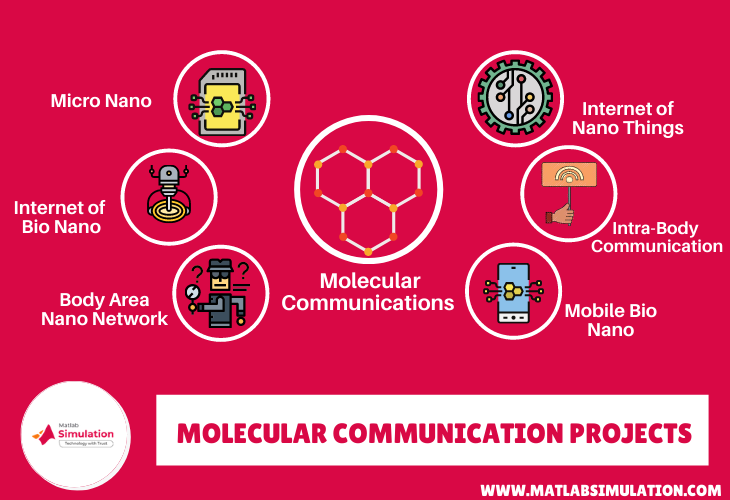 What Are Key Study Areas In This? Channel characteristics and modelling MIMO communication Channel coding and channel aggregation Adjustment of power Demodulation and ISI mitigation Reactive obstacle prediction Cluster construction and Graph modelling Localization schemes Co-channel interference reduction With attention to MC, it hangs on 1. Walkway based, 2.Flow based, and 3. Diffusion based model design. As a result of each one, point out the molecular motors, fluid flow, and Brownian motion. On the whole, MC creates an end to end sys in terms of particles with the growth of gain. In modern days it brings the 3D models into MC. Without delay, get into the resulting best topics and select yours. Diffusion Topics For Molecular Communication Projects Sequential Vortex rings Spherical Boundary Multiple absorbing receivers Cooperative relaying Adaptive threshold detectors Index modulation Asynchronous detection algorithm Decode and forward relay SOURCE 
Wireless on-demand drug delivery Abstract-- Wireless on-demand drug delivery systems exploit exogenous stimuli—acoustic waves, electric fields, magnetic fields and electromagnetic radiation—to trigger drug carriers. The approach allows drugs to be delivered with controlled release profiles and minimal off-target effects. Recent advances in electronics and materials engineering have led to the development of sophisticated systems designed for specific applications. Here we review the development of wireless on-demand drug delivery systems. We examine the working mechanisms, applications, advantages and limitations of systems that are triggered by electric fields, magnetic fields or electromagnetic radiation. We also provide design guidelines for the development of such systems, including key metrics for evaluating the practicality of different smart drug delivery systems. 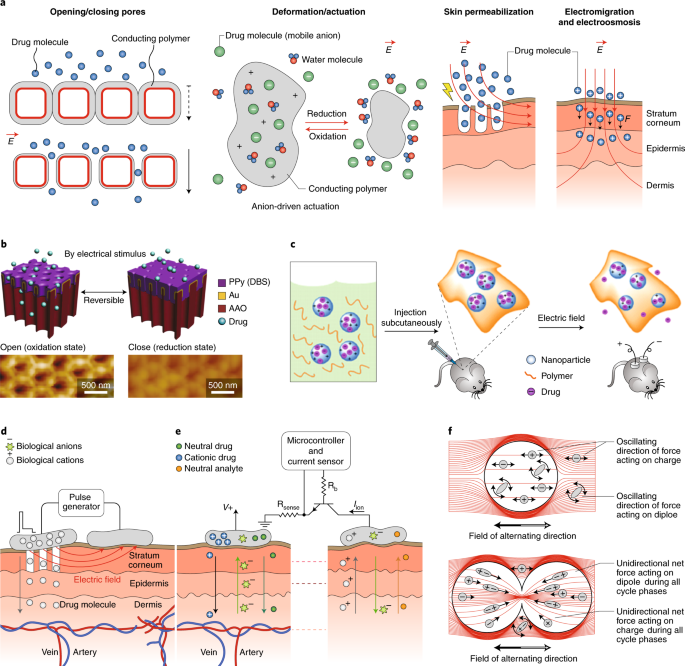 a, Four mechanisms for exciting DDSs with electric fields (E). Left: electric fields open pores of a drug reservoir covered with conducting polymers. Middle left: conducting polymer nanoparticles prepared with negatively charged drug molecules. When excited with electric fields, the nanoparticles undergo reduction reactions that shrink the nanoparticles and release the drug molecules (other forms described in the Supplementary Information). Middle right: application of the electric field increases the skin permeability via electroporation. Right: electric field enhances the transportation of surface-charged small-molecule drugs by exerting force (F) on the ions. b, Electrically actuatable smart nanoporous membrane made of polypyrrole (PPy) doped with dodecylbenzenesulfonate (DBS) for pulsatile drug release. Top: reversible change of pore size (and the drug release rate) between oxidation and reduction states. Bottom: in situ atomic force microscopy height images corresponding to the oxidation and reduction states. AAO, anodized aluminium oxide. c, Electric-field-responsive nanoparticles loaded with a drug. From left to right: the nanoparticle–polymer solution is subcutaneously injected into a mouse, followed by application of a d.c. electric field to induce the release of the drug cargo inside the nanoparticles. d, Electroporation working principle. Dielectric breakdown at the stratum corneum perforates the skin surface, increasing the permeability of the skin. Right after, the voltage is lowered to circumvent stimulation of the underlying tissues. e, Iontophoresis working principle. A low-current signal is applied at the skin’s surface (Iion) to transport the ions across the skin via electrophoresis/electromigration of surface-charged small-molecule drugs and then electroosmotic flow. V+ is the applied voltage, Rsense is the sense resistor and Rb is the resistor connected to the base of the transistor. f, TTFs working principle. Alternating current field distribution (red lines) in and around quiescent (top) and dividing (bottom) cells43. The forces exerted by the electric field on the ions (in grey) are shown with arrows. Figure reproduced with permission from: b, ref. 16, American Chemical Society; c, ref. 13, American Chemical Society; f, ref. 43, National Academy of Sciences. a, Four mechanisms for exciting DDSs with electric fields (E). Left: electric fields open pores of a drug reservoir covered with conducting polymers. Middle left: conducting polymer nanoparticles prepared with negatively charged drug molecules. When excited with electric fields, the nanoparticles undergo reduction reactions that shrink the nanoparticles and release the drug molecules (other forms described in the Supplementary Information). Middle right: application of the electric field increases the skin permeability via electroporation. Right: electric field enhances the transportation of surface-charged small-molecule drugs by exerting force (F) on the ions. b, Electrically actuatable smart nanoporous membrane made of polypyrrole (PPy) doped with dodecylbenzenesulfonate (DBS) for pulsatile drug release. Top: reversible change of pore size (and the drug release rate) between oxidation and reduction states. Bottom: in situ atomic force microscopy height images corresponding to the oxidation and reduction states. AAO, anodized aluminium oxide. c, Electric-field-responsive nanoparticles loaded with a drug. From left to right: the nanoparticle–polymer solution is subcutaneously injected into a mouse, followed by application of a d.c. electric field to induce the release of the drug cargo inside the nanoparticles. d, Electroporation working principle. Dielectric breakdown at the stratum corneum perforates the skin surface, increasing the permeability of the skin. Right after, the voltage is lowered to circumvent stimulation of the underlying tissues. e, Iontophoresis working principle. A low-current signal is applied at the skin’s surface (Iion) to transport the ions across the skin via electrophoresis/electromigration of surface-charged small-molecule drugs and then electroosmotic flow. V+ is the applied voltage, Rsense is the sense resistor and Rb is the resistor connected to the base of the transistor. f, TTFs working principle. Alternating current field distribution (red lines) in and around quiescent (top) and dividing (bottom) cells43. The forces exerted by the electric field on the ions (in grey) are shown with arrows. Figure reproduced with permission from: b, ref. 16, American Chemical Society; c, ref. 13, American Chemical Society; f, ref. 43, National Academy of Sciences. Download PDF file ---> 

'Radiogenetics' seeks to remotely control cells and genes It’s the most basic of ways to find out what something does, whether it’s an unmarked circuit breaker or an unidentified gene — flip its switch and see what happens. New remote-control technology may offer biologists a powerful way to do this with cells and genes. A team at Rockefeller University and Rensselaer Polytechnic Institute is developing a system that would make it possible to remotely control biological targets in living animals — rapidly, without wires, implants or drugs. 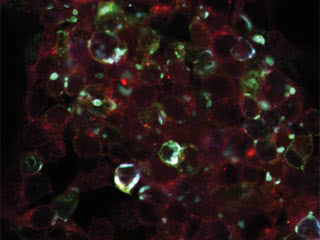 Today (December 15) in the journal Nature Medicine, the team describes successfully using electromagnetic waves to turn on insulin production to lower blood sugar in diabetic mice. Their system couples a natural iron storage particle, ferritin, to activate an ion channel called TRPV1 such that when the metal particle is exposed to a radio wave or magnetic field it opens the channel, leading to the activation of an insulin producing gene. Together, the two proteins act as a nano-machine that can be used to trigger gene expression in cells. Today (December 15) in the journal Nature Medicine, the team describes successfully using electromagnetic waves to turn on insulin production to lower blood sugar in diabetic mice. Their system couples a natural iron storage particle, ferritin, to activate an ion channel called TRPV1 such that when the metal particle is exposed to a radio wave or magnetic field it opens the channel, leading to the activation of an insulin producing gene. Together, the two proteins act as a nano-machine that can be used to trigger gene expression in cells.“The method allows one to wirelessly control the expression of genes in a living animal and could potentially be used for conditions like hemophilia to control the production of a missing protein. Two key attributes are that the system is genetically encoded and can activate cells remotely and quickly,” says Jeffrey Friedman, Marilyn M. Simpson Professor head of the Laboratory of Molecular Genetics at Rockefeller. “We are now exploring whether the method can also be used to control neural activity as a means for noninvasively modulating the activity of neural circuits.” Friedman and his Rensselaer colleague Jonathan S. Dordick were co-senior researchers on the project. Other techniques exist for remotely controlling the activity of cells or the expression of genes in living animals. But these have limitations. Systems that use light as an on/off signal require permanent implants or are only effective close to the skin, and those that rely on drugs can be slow to switch on and off.The new system, dubbed radiogenetics, uses a signal, in this case low-frequency radio waves or a magnetic field, to heat or move ferritin particles. They, in turn, prompt the opening of TRPV1, which is situated in the membrane surrounding the cell. Calcium ions then travel through the channel, switching on a synthetic piece of DNA the scientists developed to turn on the production of a downstream gene, which in this study was the insulin gene. In an earlier study, the researchers used only radio waves as the ‘on’ signal, but in the current study, they also tested out a related signal – a magnetic field –to activate insulin production. They found it had a similar effect as the radio waves.“The use of a radiofrequency-driven magnetic field is a big advance in remote gene expression because it is non-invasive and easily adaptable,” says Dordick, who is Howard P. Isermann Professor of Chemical and Biological Engineering and vice president of research at Rensselaer. “You don’t have to insert anything — no wires, no light systems — the genes are introduced through gene therapy. You could have a wearable device that provides a magnetic field to certain parts of the body and it might be used therapeutically for many diseases, including neurodegenerative diseases. It’s limitless at this point.” The choice to look at insulin production was driven by the equipment they used to generate the radio waves and magnetic fields. Because the coil that generates these signals is currently small i.e; only three centimeters in diameter, it was necessary to anesthetize the mice to keep them still. Since anesthesia can repress the production of insulin, the hormone that reduces blood sugar, Stanley and her colleagues designed the genetically encoded system to replace the insulin that is normally reduced by anesthesia in mice. “Ferritin, a protein-coated iron storage molecule, is normally found throughout the mouse and human body, but in our experiments, we modified it, placing the ferritin particles in different positions to see if we could improve our results,” says co-first author Sarah Stanley, a senior research associate in Friedman’s lab. “We found tethering the ferritin to the channel to be most effective.”The team’s positive results suggest other applications for the system. In late September, Stanley received a first-round BRAIN grant from the ambitious federal initiative seeking to create a dynamic map of the brain in action. Stanley and colleagues plan to adapt this system to switch neurons on and off, and so examine their roles within the brain. “In this current study, we’ve shown that by opening the TRPV1 channel to allow calcium ions to enter the cell, we can turn on a gene. Since neurons can be depolarized by calcium and other positively charged ions, such as those the TRPV1 channel controls, we hope that this system may be effective at regulating neural activity.” SOURCE

Interfacing Graphene-Based Materials With Neural Cells 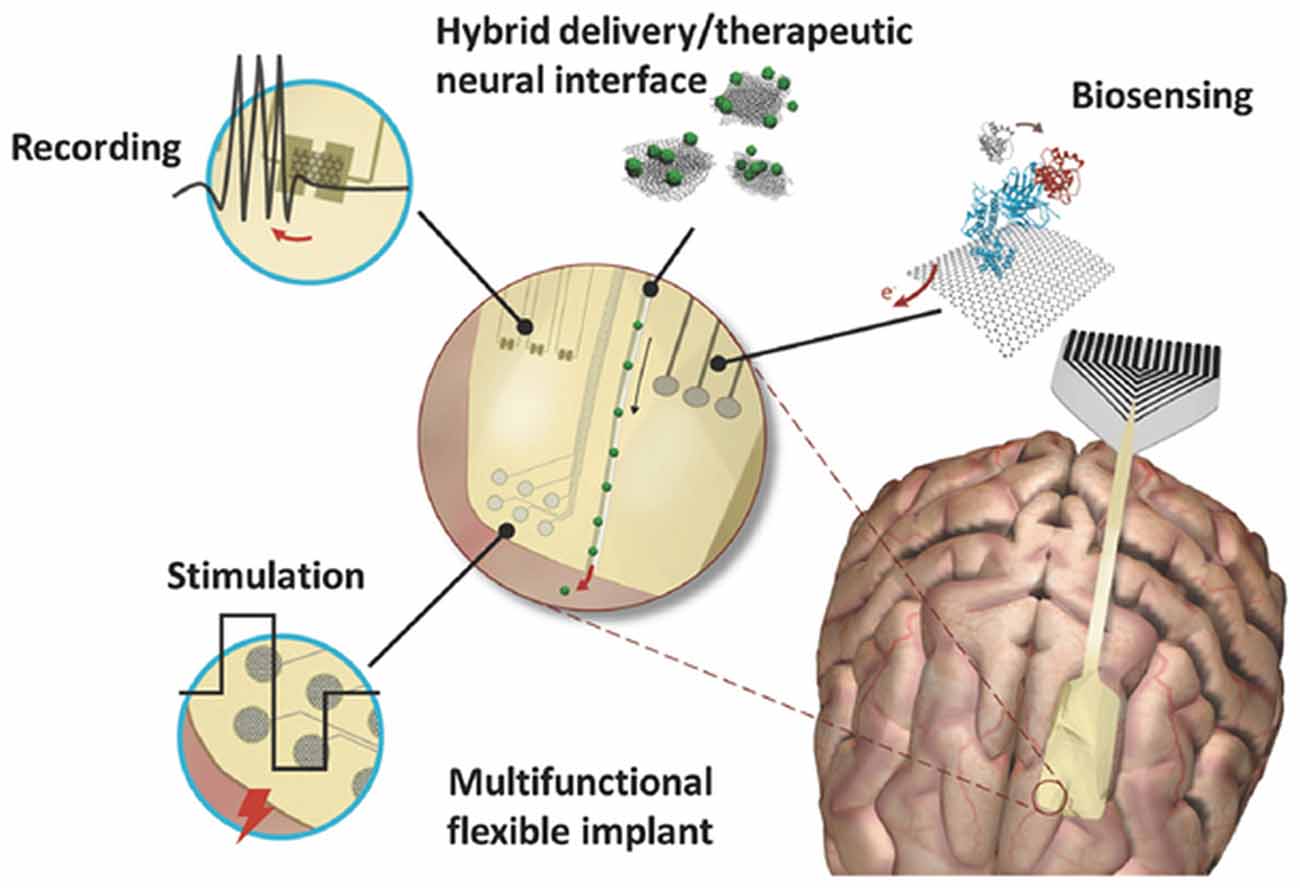 FIGURE 1. Graphene based neural interfaces for a variety of neuronal functionalities like recording, stimulation and biosensing. Modified with permission from Kostarelos et al. (2017). FIGURE 1. Graphene based neural interfaces for a variety of neuronal functionalities like recording, stimulation and biosensing. Modified with permission from Kostarelos et al. (2017).

Human body can help power 6G devices as antennas in future, boost signal, shows study Engineers at the University of Massachusetts Amherst have discovered that the human body can safely collect enough electromagnetic energy or RF energy that it can power minor IoT devices, and even act as an antenna for 6G devices in the future 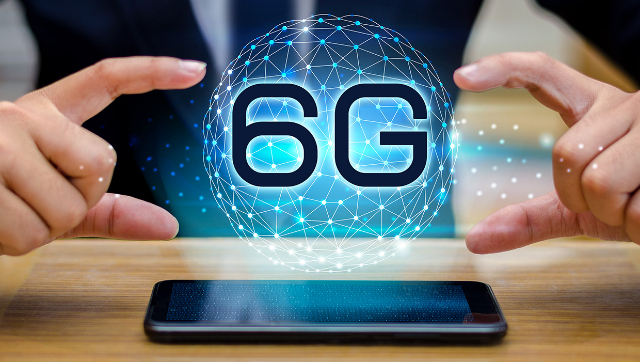) A team of researchers at the University of Massachusetts Amherst has claimed that in a study they have conducted, they found that the human body could be a useful tool to harvest waste energy and use it to power devices in the future, including those used for 6G, the next generation of wireless communication. The human body can act as range extenders, with each individual body, acting as antennae. The benefits of 5G wireless connectivity, which has been implemented in several nations worldwide, are just now starting to be felt by the general public. However, the following generation, known as 6G, promises data rates up to 1000 times quicker, as well as a tenth the latency of 5G. With its successor, an even greater number of devices and sensors are anticipated to become online, ushering in a new phase in the Internet of Things (IoT) era that is anticipated to start with 5G. The development of Visible Light Communication (VLC), a kind of wireless fibre-optic network, is thought to be responsible for the greater communication rates expected in 6G. What is Visible Light Communication? In its most rudimentary form, Visible light communication (VLC) is a wireless method that uses light emitted by LEDs to deliver networked, mobile, high-speed communication similar to Wi-Fi, leading to the term Li-Fi. It can be used as a standalone solution or in a supplementary role to radio-frequency (RF) or cellular network communication. The basis of the technology involves switching LEDs ON and OFF within nanoseconds at a very high frequency. As the visible light spectrum is 10,000 times larger than the radio frequency spectrum, VLC is regarded as a solution to RF bandwidth limitations. The industry has generated very high data transmission rates, making it competitive. Though the signal cannot penetrate obstructions such as walls, a direct line of sight is not required as long as light is reflected from other surfaces. The LED lighting must be ON for the signal to transmit but can be dimmed to very low levels. VLC has an advantage over Wi-Fi in that transmission does not cause electromagnetic interference. How does Visible Light Communication work? When it comes to transferring information, VLC functions much like radio transmissions, with the exception that it does so by using light from light-emitting diodes (LEDs). According to Jie Xiong, a professor of information and computer sciences at the University of Massachusetts Amherst, in a VLC array, one LED has the capacity to turn on and off a million times per second. We already have the infrastructure in place to implement this technology since LED lighting is used in all of our buildings, businesses, streets, and cars. In addition, any device with a camera, such as a laptop, tablet, or smartphone, may act as a receiver and enable the technology. These LEDs also emit side-channel radio frequency (RF) or radio waves which is an energy leak, and this could be harvested to make VLC devices work. Harnessing RF Leakage Xiong and his colleagues set out to create an antenna that might capture this energy being released. They used copper wires that were wound into coils for their antenna design, which were afterwards put to the test for their energy-gathering capacity. The researchers discovered that the antenna’s capacity to gather energy increased when it was connected with another item, regardless of the coil’s thickness or the number of times the copper wire was twisted. Apart from keeping the antenna in contact with different materials like wood and steel, the researchers also kept it in contact with objects like walls, tablets, phones, and even laptops to see how much energy could be harvested. The team found that energy collection increased with electronic gadgets but was highest when the coil was in touch with the human body. Apart from keeping the antenna in contact with different materials like wood and steel, the researchers also kept it in contact with objects like walls, tablets, phones, and even laptops to see how much energy could be harvested. The team found that energy collection increased with electronic gadgets but was highest when the coil was in touch with the human body. SOURCE  AlphaFold 3 predicts the structure and interactions of all of life’s molecules Introducing AlphaFold 3, a new AI model developed by Google DeepMind and Isomorphic Labs. By accurately predicting the structure of proteins, DNA, RNA, ligands and more, and how they interact, we hope it will transform our understanding of the biological world and drug discovery. 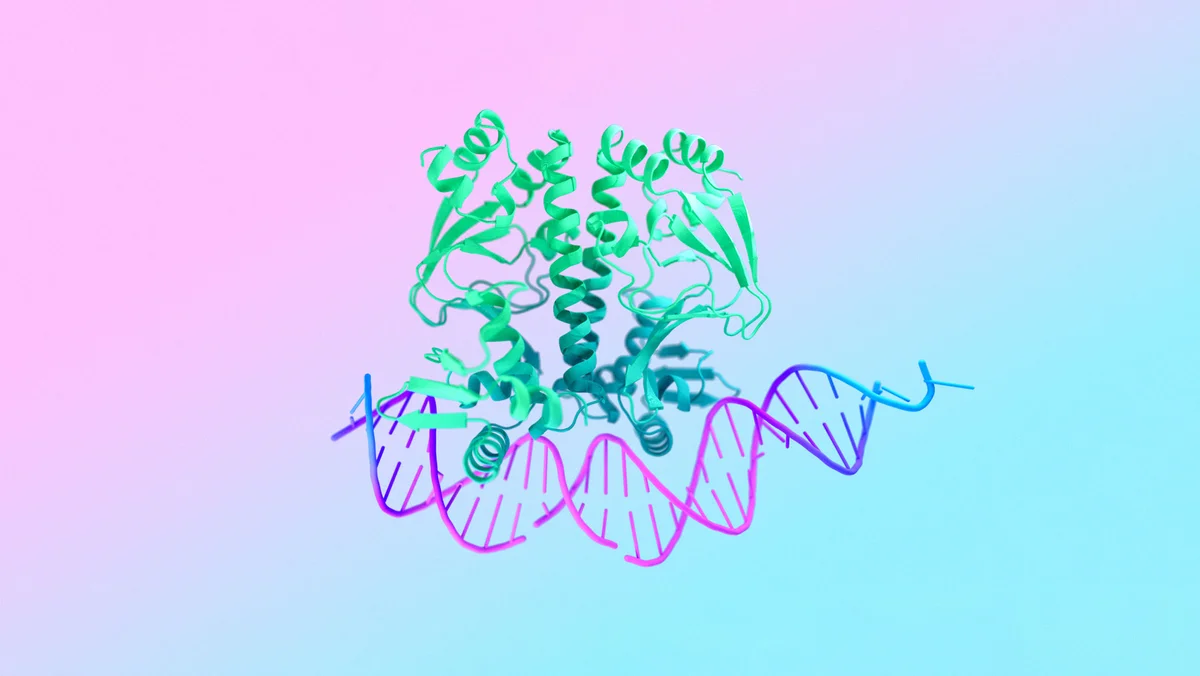 Inside every plant, animal and human cell are billions of molecular machines. They’re made up of proteins, DNA and other molecules, but no single piece works on its own. Only by seeing how they interact together, across millions of types of combinations, can we start to truly understand life’s processes. In a paper published in Nature, we introduce AlphaFold 3, a revolutionary model that can predict the structure and interactions of all life’s molecules with unprecedented accuracy. For the interactions of proteins with other molecule types we see at least a 50% improvement compared with existing prediction methods, and for some important categories of interaction we have doubled prediction accuracy. We hope AlphaFold 3 will help transform our understanding of the biological world and drug discovery. Scientists can access the majority of its capabilities, for free, through our newly launched AlphaFold Server, an easy-to-use research tool. To build on AlphaFold 3’s potential for drug design, Isomorphic Labs is already collaborating with pharmaceutical companies to apply it to real-world drug design challenges and, ultimately, develop new life-changing treatments for patients. Our new model builds on the foundations of AlphaFold 2, which in 2020 made a fundamental breakthrough in protein structure prediction. So far, millions of researchers globally have used AlphaFold 2 to make discoveries in areas including malaria vaccines, cancer treatments and enzyme design. AlphaFold has been cited more than 20,000 times and its scientific impact recognized through many prizes, most recently the Breakthrough Prize in Life Sciences. AlphaFold 3 takes us beyond proteins to a broad spectrum of biomolecules. This leap could unlock more transformative science, from developing biorenewable materials and more resilient crops, to accelerating drug design and genomics research. SOURCE 
PANACEA: An Internet of Bio-NanoThings Application for Early Detection and Mitigation of Infectious Diseases Abstract and Figures
The Internet of Bio-NanoThings (IoBNT) concept envisions the connection between biological cells and the Internet. The ultimate goal of IoBNT is to catalyze a revolution in biomedical technologies through advances in molecular communication, integrated systems, bio-nanosensors and synthetic biology to improve human health and quality of life. In this paper, an application of IoBNT called PANACEA (a solution or remedy for all difficulties or diseases in Latin) is presented as a solution for an end-to-end design towards realizing the IoBNT for the first time in the literature. The architecture of PANACEA is tailored to focus on diagnosis and therapy of infectious diseases. In PANACEA, to detect the communication within the cells of the body to deduce infection level, a submilimeter implantable bio-electronic device, a Bio-NanoThing, is proposed. BNT can transmit the detected infection data remotely to a wearable hub/gateway outside of the body. The hub can use mobile devices and the backbone network such as Internet or cellular systems to reach the healthcare providers who can remotely control the BNTs. Hence, PANACEA provides a system, where sensing, actuation and computing processes are tightly coupled to provide a reliable and responsive disease detection and infection recovery system. Incorporating molecular communication and conventional networks brings many challenges that are attacked in various fronts such as circuit and biosensor design, communications engineering, with novel solutions presented in this paper, accompanied with simulation results.
Download PDF Medical Journal --->   The Internet of Bodies: The Human Body as an Efficient and Secure Wireless Channel Abstract and Figures
The Internet of Bodies (IoB) is a network of smart objects placed in, on, and around the human body, allowing for intra-and inter-body communications. This position paper aims to provide a glimpse into the opportunities created by implantable, injectable, ingestible, and wearable IoB devices. The paper starts with a thorough discussion of application-specific design goals, technical challenges, and enabling communication standards. We discuss why the highly radiative nature of radio frequency (RF) systems results in inefficient communication due to over-extended coverage, causing interference and becoming susceptible to eavesdropping. Alternatively, body channel communication (BCC) uses the human body as a transmission medium by coupling harmless electrical signals, yielding secure and efficient communication thanks to better channel conditions and lower signal leakage than over-the-air RF systems. Numerical results show that various BCC topologies can respectively reach 8-12 Mbps and 1.5-3 Mbps max-sum and max-min rates with 1 MHz bandwidth and-30 dBm transmission power, which is three orders of magnitude lower than safety limits. Moreover, the BCC is capable of accommodating tens of IoB nodes up to 1 Mbps rates, which is sufficient for most IoB applications. Furthermore, as the cyber and biological worlds meet, security risks and privacy concerns take center stage, leading to a discussion of multi-faceted legal, societal, ethical, and political issues related to technology governance.
 Download PDF Medical Journal --->   |
||